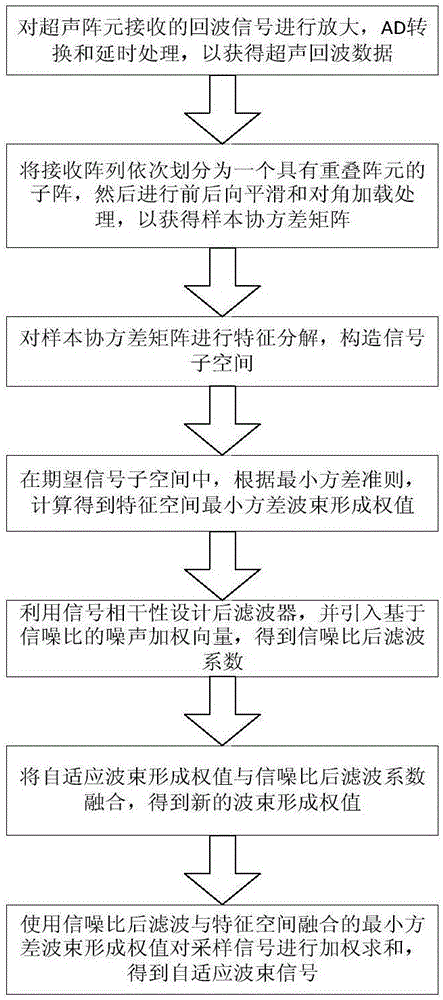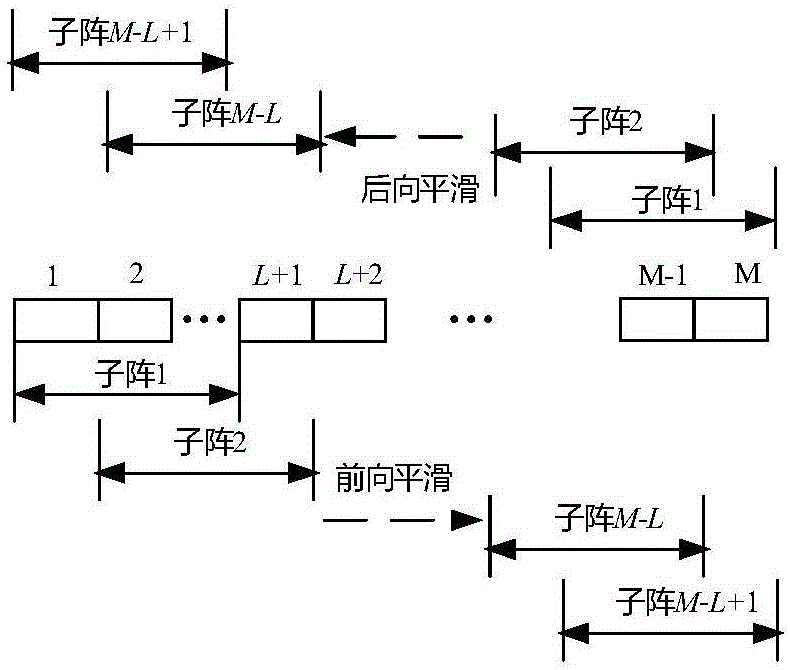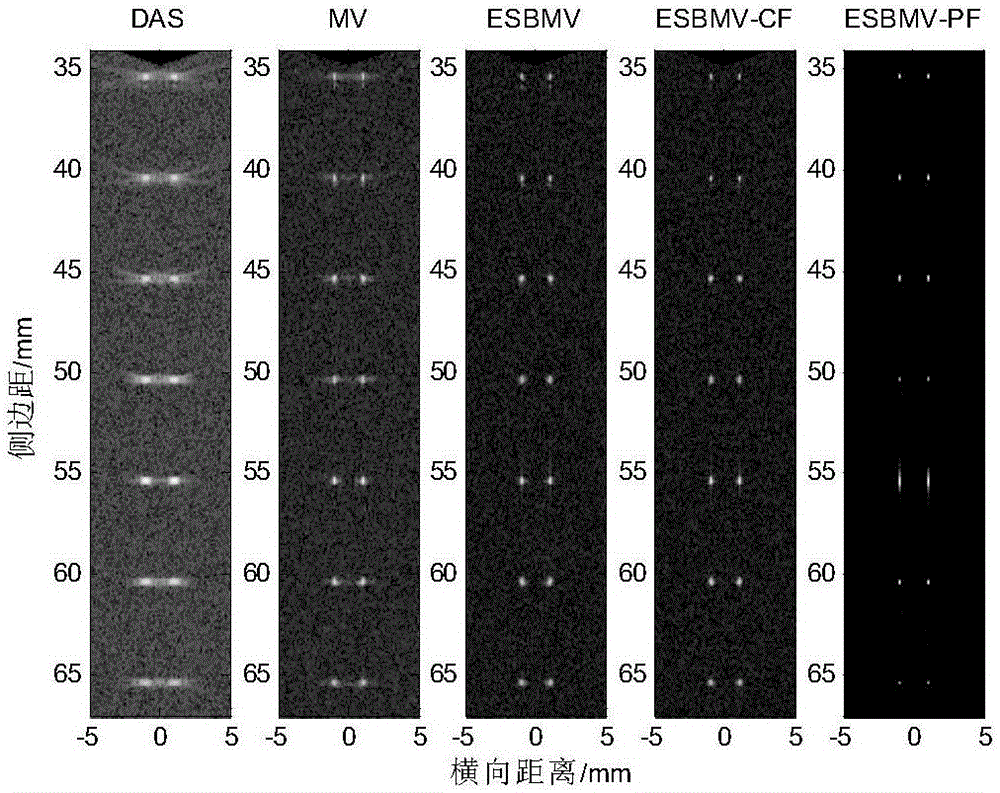Signal-noise-ratio-post-filtering-and-characteristic-space-fusion minimum-variance ultrasonic imaging method
An ultrasonic imaging method and a technique of minimum variance, applied in ultrasonic/acoustic/infrasonic diagnosis, image enhancement, acoustic diagnosis, etc., can solve problems such as not being able to significantly improve image contrast and resolution
- Summary
- Abstract
- Description
- Claims
- Application Information
AI Technical Summary
Problems solved by technology
Method used
Image
Examples
Embodiment Construction
[0062] The preferred embodiments of the present invention will be described in detail below with reference to the accompanying drawings.
[0063] figure 1 It is an algorithm flow chart of the present invention, as shown in the figure, the present invention provides a minimum variance ultrasonic imaging algorithm for signal-to-noise ratio post-filtering and feature space fusion, including the following steps:
[0064] Step S1: Amplify and AD convert the echo signal and perform delay focus processing to obtain the signal x(k) after focus delay processing, and x(k) is expressed as x(k)=[x 1 (k),x 2 (k),...,x N (k)], where N represents the number of array elements of the ultrasonic array, and k represents the sampling moment corresponding to the sampling depth.
[0065] Step S2: The receiving array is sequentially divided into a sub-array with overlapping array elements, and then the echo signals of the corresponding receiving sub-array are subjected to forward-backward smoothi...
PUM
 Login to View More
Login to View More Abstract
Description
Claims
Application Information
 Login to View More
Login to View More - R&D
- Intellectual Property
- Life Sciences
- Materials
- Tech Scout
- Unparalleled Data Quality
- Higher Quality Content
- 60% Fewer Hallucinations
Browse by: Latest US Patents, China's latest patents, Technical Efficacy Thesaurus, Application Domain, Technology Topic, Popular Technical Reports.
© 2025 PatSnap. All rights reserved.Legal|Privacy policy|Modern Slavery Act Transparency Statement|Sitemap|About US| Contact US: help@patsnap.com



